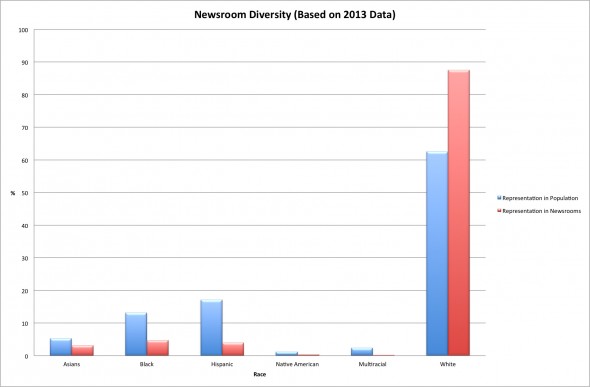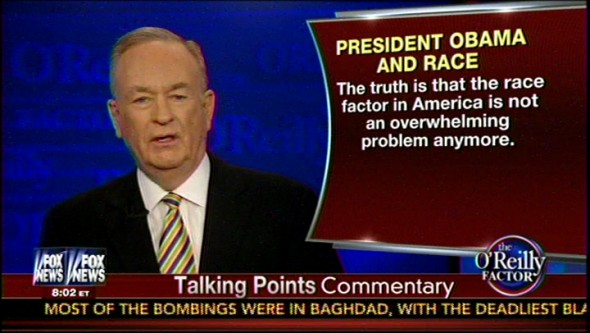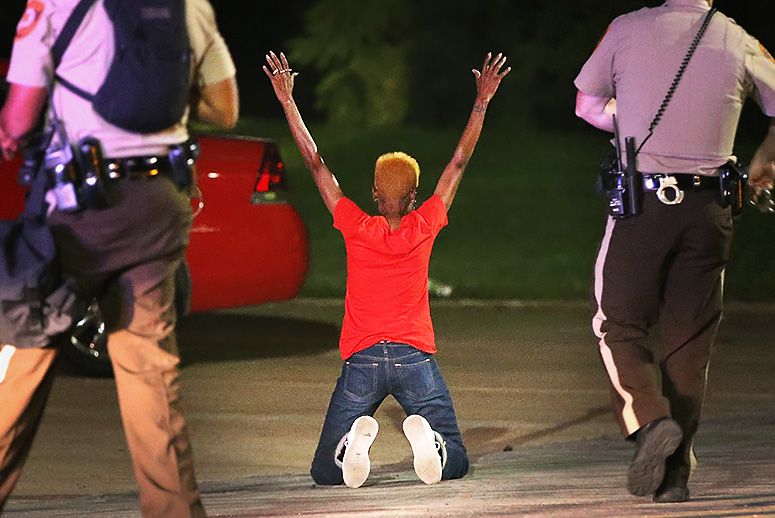By Chandler Longbons and Darko Ivanović
“We have achieved a lot, but we don’t get the recognition” says vividly disappointed but still radiantly proud Cronkite professor, Retha Hill.
“Take Oprah for example. She is fantastic, and it just goes to show when you get a shot, what can happen. But when you hold people down, you don’t know that you might be holding down the next Oprah…when you’re not giving people that opportunity.”
And opportunities don’t come out of the blue, especially in the media. You just have to try harder.
Like Retha has.
She’s a tenacious reporter and entrepreneur who has been in the industry for over 30 years with likes of Washington Post and BET, a single mom and…an African American.

She’s in our spotlight, for oh so many reasons: she’s a member of the National Association of Minority Media Executives, the National Association of Black Journalists and the Arizona Association of Black Journalists.
And as she witnesses- The Times they are (not) A Changin’:
According to the American Society of News Editors and US Census data, we are further off from achieving equal representation in the newsroom than many would have thought. No minority race exceeds or even comes close to meeting their representation in the population. Despite this, white newsroom employees check in at 88 percent of all media employees–when white people represent just 65 percent of the population.

What infuriates reporters and the public are latest racially charged developments, which have opened the Pandora’s box of racial reporting problems in America. Our trigger was the infamous “Go back to Univision ” mantra from presidential candidate, Donald Trump.
Some say his comment sounded a lot like, “Go back to Mexico“.
Hill acknowledges the Univision anchor hogging the mic and entering the debate, but she also criticizes “disrespectful Trump” for making the remark.
“Having said ‘go back to Univision’- I think that was a code, for ‘go back to your country, go back to Mexico’. I definitely see it as a code. But Mr. Trump is a smart man, and I think he deliberately held back. Fifty percent of people see it in one way and 50 percent in another.”
Q: So do you see the racial intolerance in this incident? Because the anchor was a Mexican and he was asking immigrant related questions.
Hill: Yes I do because this has been going on for for at least 30 years. Well if you’re a member of minority group and you are covering particular issue- you are seen automatically as having a bias.
This happened with African-American political reporters that covered Jesse Jackson. The question back then was-‘are you a black first or the reporter first?’ You saw it in San Francisco right after some of the first legalisation of the (gay) marriage in country because the couple that was responsible for coverage of the topic for the local TV station actually went down and married as soon as the ban was lifted. So the question was should they have been taken off that story?
We don’t ask white reporters to recuse themselves from covering politics, covering race issues, business issues or any of that- but people in a minority groups (gay, African Americans, Hispanic) are often asked that question so the implication is: because you are from certain minority group- you cannot be fair.
And that same question is never put to the white people around that, or rarely put to white people around that. It might be just- do you understand it or have the cultural competence to cover that story–but not that because you’re white you are automatically biased in covering an issue that has to do with race, or ethnicity or sexuality.
Q: How do you see reporting back then and now? Has anything changed?
Hill: I think the biggest change is that there are more people from minority groups that are in the newsrooms then perhaps back in the 70s and the 80s- that was right before I started. But the beginning of the 80s when I was coming out from the college, getting those first jobs there were a number of African-Americans, women and Latinos and people who are openly gay in the newsrooms. That has been the biggest change and it was helpful. Because you’re getting diverse voices at the table where decisions were made.
But the fact of the matter is only 12 percent of people in the nation’s newsrooms are people of the minority group. There are more than 50 percent of newsrooms across this country – have no people of color working there. None!
So, when the decision is made how to cover a story, how to approach something, what headlines to put on, there is not a person in newsroom that could tap someone on the shoulder and say: ‘we might want to rethink that headline, that position…’.
No it hasn’t changed enough.

I think some of these same old issues keep coming up over and over and over again. But, I think at the same time these newsrooms are a reflection of the communities in which they are operating. And the communities a lot of times have bias and prejudice against people , and it is our job though as reporters and news people to rise above that and shine a light into dark places and help communities to confront their own worst fears, and habits and thoughts about people that might not look like them.
And you see it all the time with the way that things are being covered:
Right now the poor Syrians, people who are in Europe that are being taken in by these countries. Over here the narrative is immigrants that are coming into the country illegally as well are ‘hoards that want to take over America”. And the same people that write the headlines for one are writing the headlines for another- if you are a national publication. And the bias is inherent…in the way that it’s covered.

Q: Media tends to give racial questions ample coverage during times of crisis-when something controversial or something really terrible happens. How do you think this episodic coverage affects what readers and viewers take away about racial issues in America?
Hill: It’s the same thing that happened back in 1968 when a Kerner commission issued its report talking about rioting in America, in which it said that the media have done a terrible job of integrating coverage of communities and basically reflecting what is really going on in the communities. People get up and go to work and buy houses, get married and have children- do all the normal things that people usually do. But when you only cover communities in the times of crisis, the larger community tends to look at that community or sexual minority as being troubled. Those black people who are always having problems… confronting the police, getting in trouble, getting shot dead. Poor, poor black people. And there is worse: poor evil black people. Or even Latinos who are doing horrible things, raping and killing folks and you don’t see your neighbours you don’t see that these are other members of your community.
And I know that as media we are always looking for problems to solve, and if you see everything from the lens of a problem in the society you do look for those issues. Is there a problem of women getting sexually assaulted on campus? You cover that story as opposed to- guess what? 30,000 women got up and went to college today.
That is not a story.
The story is, ‘one of them got dragged off to bushes or in the frat house and raped and beaten’. And I understand that.
But there are a lot of other ways in which you can do integrative coverage in terms of sourcing stories and photographs in media -newspaper or television.

USA Today had a policy they had to have diversity on the pages of the newspaper. So when you looked at that newspaper, a certain amount of sources that are being quoted are of color. They were careful of how many photos that you have (of people), and are not athletes, are of of color.
And you know- that was some source of controversy, their quotas. And there was some derision in the newspaper industry about this, but I still think it is sound.
If people cannot figure it out on their own and if you cannot guide people naturally to say: ‘hey, wait a minute. What’s wrong with this front page? Every photo on here is white?’or ‘What’s wrong with this newscast? Every person we interviewed in Chicago today that is on our 6 o’clock newscast is white.’
If you cannot do it that way then sometimes you gotta have quotas. You have to say: ‘look, it’s 30 percent and go out and find it.’ And if you struggle and try hard enough you can. Most of the time it’s not a struggle. It is just reporters get really, really lazy.
So we just have to stop being lazy as a reporters.
Q: Some reporters have suggested covering race in a consistent beat, or featuring segments on broadcasts specifically to address race and culture. Do you think this is the solution/a positive step forward?
“I know a lot of media outlets these day have either a race beat or a poverty beat or something like that and I was just…trying to get a speaker to come and talk about being black and covering the race beat and the psychological and emotional toll that that takes from seeing people that look like you and look like your brothers and sisters and sons shot down in the street. I think it’s an important enough story in America that needs to be covered, but I don’t think it should absolve reporters on other beats from tackling it.
I am in the Society for Black Journalists and the National Association for Black Journalists because they’re organizations to elevate our members but also to push for diversity in media. Back in the 70s it’s like, ‘Oh we can’t find black people to be reporters.’
Okay here you go.
And now in 2015, ‘Oh we can’t find black multimedia people, or black kids who know data journalists.’
Okay here you go.
So that’s what we do and we are pushing people, not only traditional journalists, but the Googles and the Facebooks and the Amazons and the startups and the Snapchats and the Instagrams. If you look at their diversity figures, they have less than three percent Black and Hispanic. And that’s not just on the news and the media side—that’s engineering. Howard University has an engineering program, Morehouse, Hampton University, all of these historically black schools—not to mention schools where they are in places where their population is majority, you know like ASU or Wayne State University in Detroit where about 70 percent African American that go to the school that’s not historically black, because where its located. You mean you cant find some engineers who are black in this country to work at Google and Facebook?
You’re not looking. Sorry you’re just not looking.
And its so frustrating to hear we can’t, we can’t, we can’t when obviously you can and its just an excuse because you have to be led by the hand and taken to these places and say ‘look at all of this, look at all of these people, look at all of these women who are engineers, look at all of these Latinos who are studying engineering.’
I think from an entrepreneurship standpoint I think that African Americans especially and Latinos more recently have been pretty good at telling our own stories. We, speaking of African Americans, have always had our own newspapers, and at one point before the 1970s these were strong publications that everyone in the black community read. We have Black Entertainment Television and TV 1 and of course more recently now, all types of digital first publications started by African American entrepreneurs and now Hispanic entrepreneurs as well. I think that’s a strong story because we have always told our own story. You can’t force people to listen you can’t force people to watch but we have always told our own story. So we’re not always victims here. We are in there swinging and we are in there telling the truth about what’s happening. We had reporters in WWII, we had reporters in Vietnam, Korea. I’m talking about the Baltimore African American, the Amsterdam News, which is in New York City, the Chicago Defender; these were stellar publications that have been around, many of them, since the early 1900s.
But you just don’t get that recognition.”
And as students we se it: every minority feels it.
Whether it is a reporter or a construction worker. And they are disappointed and somewhat angry on how are they being perceived. Getting back to our “trigger” from the beginning of the story, this is how a Mexican worker replies:
When you sum it all up- America has certainly has great strides to make in covering race.
It is to the benefit of all media organizations to ensure that their newsrooms represent their audience. By evening out newsrooms and creating diverse environments, we allow multiple perspectives to be heard, which is invaluable when so many racially charged issues still plague our society.
One of the primary problems with the coverage of race in the media is the lack of consistent coverage.
We only seem to care about racial issues when there is a “hot-button” story during crisis. This kind of episodic coverage can cheapen race coverage and tears the focus away from the real issues at hand.
If we lose that focus, all of our media coverage on race becomes- Minority report.




I like your focus on episodic coverage of race as an inherently negative framing — I had never thought about it that way. Seems like the solution is to cover race issues more often, and regularly, to avoid putting them in that light. I read this interview between two Asian-American journalists about Asian-American representation in media this past summer: http://the-toast.net/2014/10/23/asian-americans-media/. I think this is a good kind of discussion to have about issues without a tragic or dangerous news hook.
“We don’t ask white reporters to recuse themselves from covering politics, covering race issues, business issues or any of that- but people in a minority groups (gay, African Americans, Hispanic) are often asked that question so the implication is: because you are from certain minority group- you cannot be fair.”
We live in a pretty ridiculous culture. This implication against minority journalists means, were it fairly applied to all journalists, that you can’t report on anything you’re familiar with or have a stake in! That’s outrageous! I guess I can’t cover anything to do with WHITE PEOPLE! Remind me again which culture is threatening the other? Not only is this bad logic, but elevates objectivity to an impossibly high level that, (let’s be honest), nobody achieves.
Of course, I feel like pigeonholing the token newsroom minorities to cover “minority news” is also offensive. Sure, they *may* (note emphasis) have unique insights into the community, but their ethnicity/racial background doesn’t have to define who they are. I feel it’s something best up to the individual reporters.